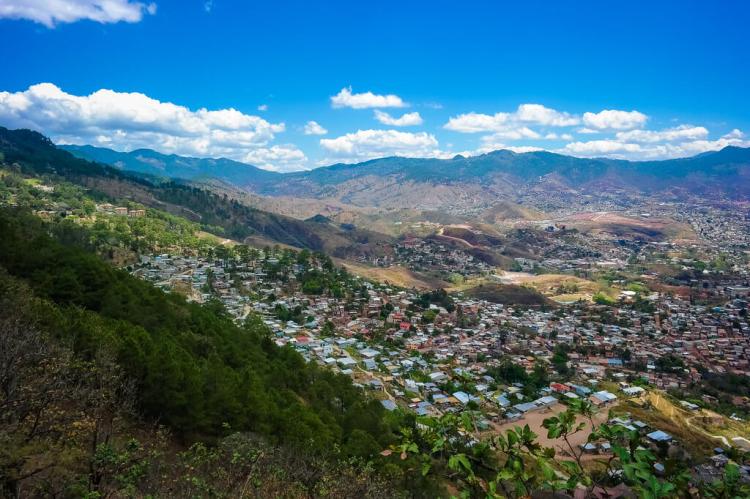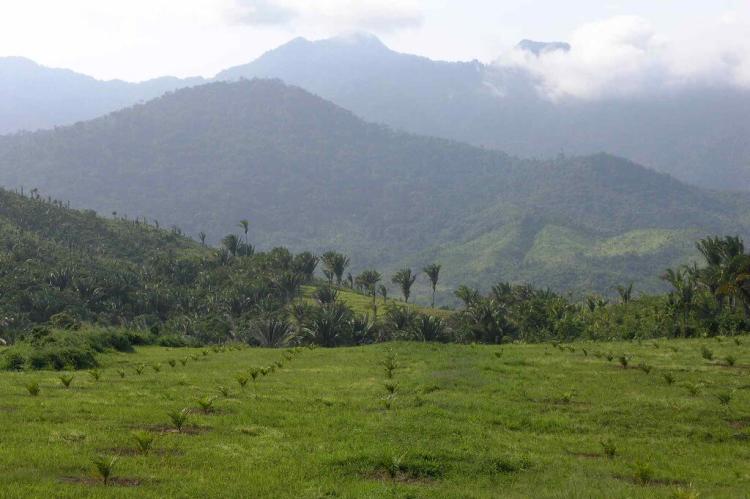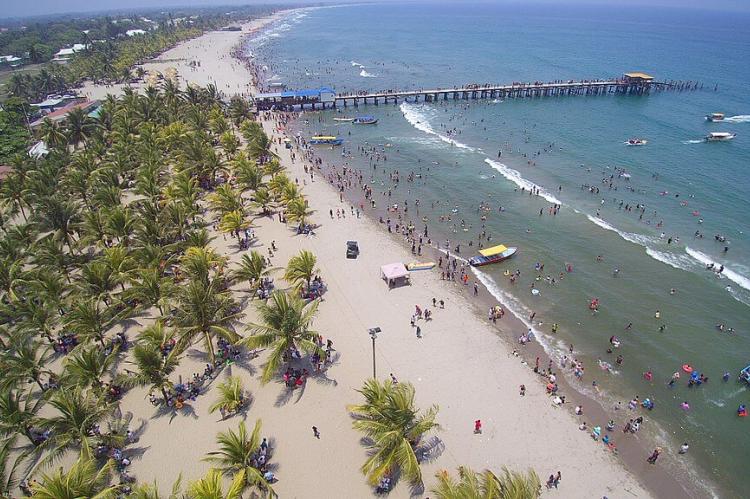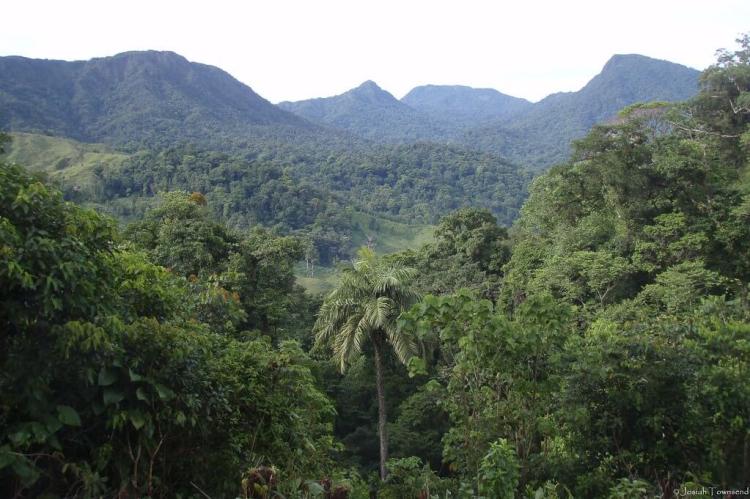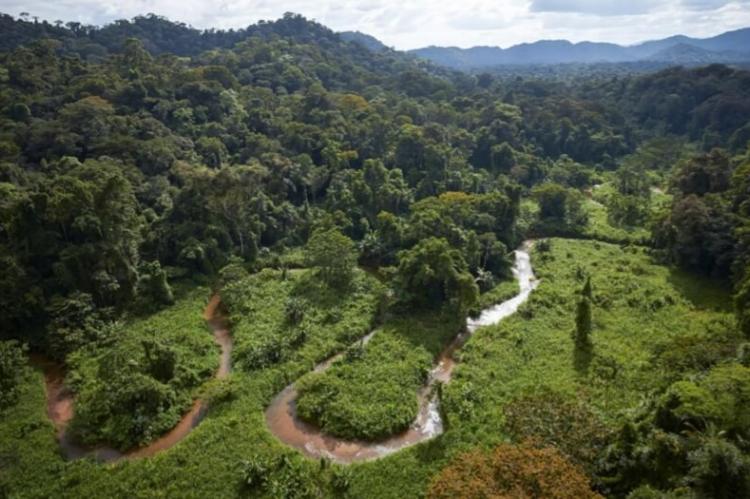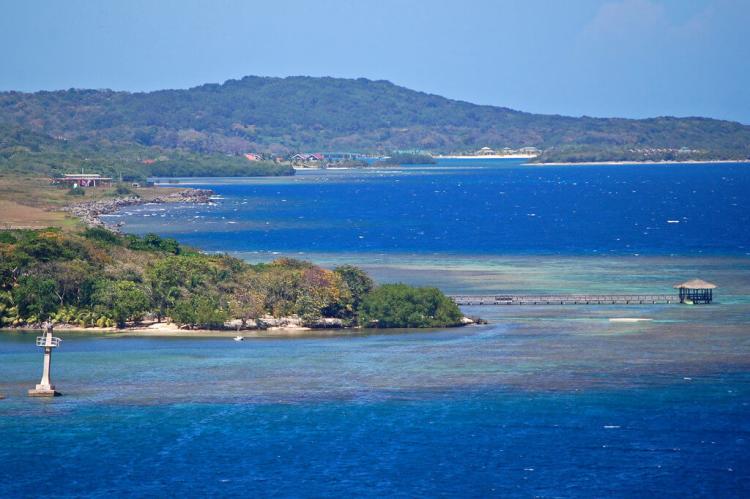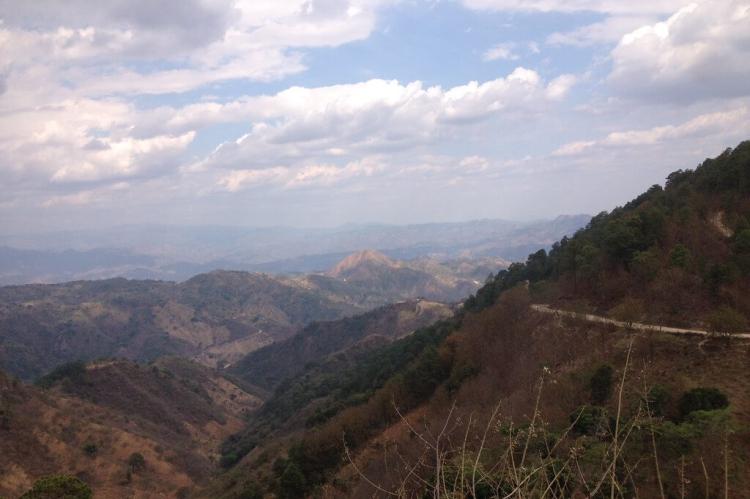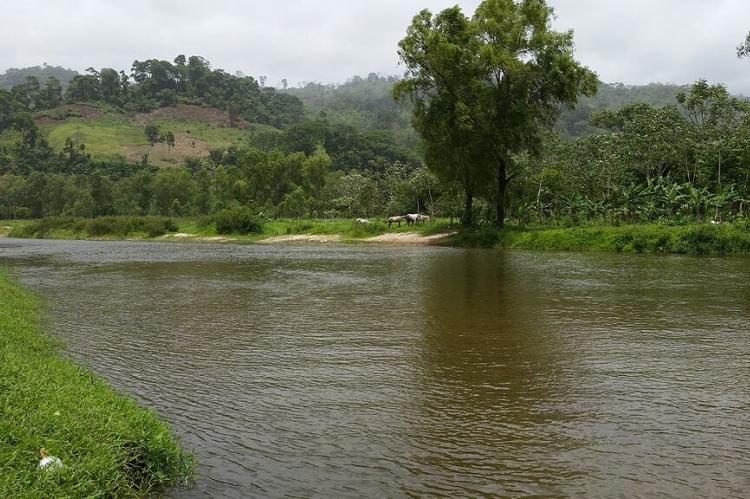Honduras: Natural Landscape
Honduras, located in northern Central America, is mostly mountainous. Lowlands are situated along its Pacific and Caribbean coasts and the river valleys of the interior. Most of the population resides in the central highlands, an economically important agricultural region.
The Natural Landscape of Honduras
Honduras, situated in northern Central America, shares borders with Nicaragua to the southeast, El Salvador and the Pacific Ocean to the southwest, Guatemala to the west, and the Caribbean Sea to the north. This strategic positioning places Honduras at the crossroads of diverse geographical and cultural influences within the region.
As the second-largest country in Central America, Honduras encompasses an expansive land area of approximately 112,090 square kilometers (43,300 square miles). This includes the Bay Islands, scattered in the Gulf of Honduras along its extensive 700-kilometer (430-mile) Caribbean coastline, adding a distinct maritime dimension to the nation's geography.
The topography of Honduras is characterized by a predominantly mountainous terrain, with lowlands primarily distributed along the coasts or nestled within river valleys. The Gulf of Fonseca delineates the country's Pacific coastline in the southwest, stretching across 153 kilometers (95 miles) and contributing to the diverse coastal landscapes that define Honduras. This coastal diversity, coupled with the presence of the Bay Islands, underscores the country's rich natural assets and significance as a bridge between the Caribbean and the Pacific.
Biodiversity
Honduras is a haven of biodiversity, its richness stemming from a diverse landscape mosaic encompassing tropical rainforests, cloud forests, coastal areas, and expansive mountain ranges. This ecological diversity nurtures a vast array of flora and fauna, making Honduras a notable reservoir of life.
The Honduran Ministry of Environment, MiAmbiente, meticulously catalogs the nation's biodiversity, revealing an impressive array: 7,524 registered species of vascular plants, 718 bird species, 228 mammal species, 211 reptile species, 111 amphibian species, 2,500 insect species, and 672 fish species.
Conservation
Acknowledging the intrinsic value of the country's natural heritage, Honduras has made strides in conservation by establishing protected areas and national parks. The Río Plátano Biosphere Reserve, Cusuco National Park, Pico Bonito National Park, and Nombre de Dios National Park play pivotal roles in safeguarding the country's unique ecosystems.
However, Honduras confronts formidable challenges in the form of deforestation, habitat degradation, and illegal wildlife trade. Despite these challenges, conservation organizations and local communities are actively engaged in addressing these issues. Their efforts aim to counteract the threats to biodiversity and promote sustainable land use and conservation practices. Through these collective endeavors, Honduras strives to balance the preservation of its natural treasures with the needs of its growing population, fostering a harmonious coexistence between human development and ecological conservation.
Climate
Honduras experiences a tropical climate characterized by well-defined wet and dry seasons. The wet season, spanning from May to October, witnesses substantial rainfall and aligns with the hurricane season. Conversely, the dry season from November to April offers more favorable weather conditions for tourism and outdoor activities.
Temperature fluctuations are influenced by elevation, contributing to microclimates and diverse rainfall patterns across the country. In the coastal lowlands, temperatures average between 26 - 29 °C (79 - 84 °F) annually, while in the highlands, the range is 16 - 24 °C (61 - 75 °F).
The tropical coastal lowlands exhibit a generally hot climate with high humidity, gradually transitioning to more temperate conditions as elevation increases toward the interior. Despite these climatic nuances, Honduras faces the risk of natural disasters such as hurricanes, tropical storms, and flooding, emphasizing the dynamic interplay between geographical features and climate challenges in the region.
Volcanism
Situated within the seismic hotspot of the Pacific Ring of Fire, Honduras bears the geological imprint of tectonic activity, manifesting in a history of volcanic phenomena. Although the country lacks active volcanoes, its landscape reveals the echoes of past volcanic events, and ongoing geothermal activity is intricately linked to its tectonic setting.
While Honduras doesn't presently experience eruptions, the potential for future volcanic activity underscores the country's dynamic geological context. Geothermal activity, a testament to the region's subsurface heat, has sparked conversations about leveraging this energy source for electricity generation in the years to come. Exploring the harnessing of geothermal energy reflects an innovative approach to sustainable power generation. It emphasizes Honduras's commitment to embracing its geological assets for practical and environmentally conscious advancements in the future.
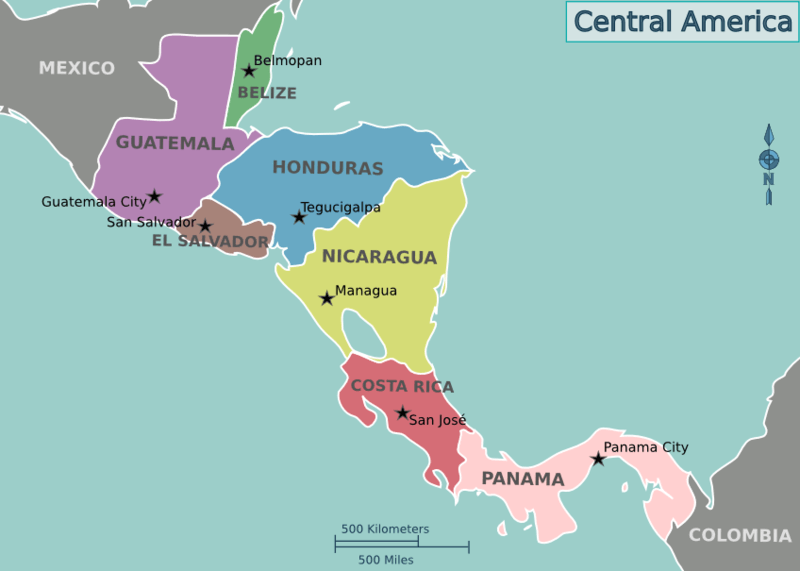
Location map of the countries of Central America
Natural Geography of Honduras
Topography
Honduras boasts a diverse and rugged topography, with mountainous terrain covering more than 75% of its land area. Lowlands, situated along the Pacific and Caribbean coasts and the interior river valleys, provide a scenic contrast to the elevated landscapes.
The interior highlands showcase a network of upland valleys and small peaks, creating a dynamic and undulating topographical mosaic. The predominant surface features are aligned in a general east-to-west direction, contributing to the overall geographical orientation.
The southwestern region of Honduras is adorned with the Volcanic Highlands, home to the country's loftiest peaks. Pico Congolón stands proudly at 2,500 meters (8,200 feet), while Cerro Las Minas, reaching an impressive 2,850 meters (9,350 feet), claims the title of Honduras' highest point. This mountainous expanse not only defines the country's physical landscape but also offers a captivating blend of elevation, valleys, and peaks, showcasing Honduras's natural beauty and geographical diversity.
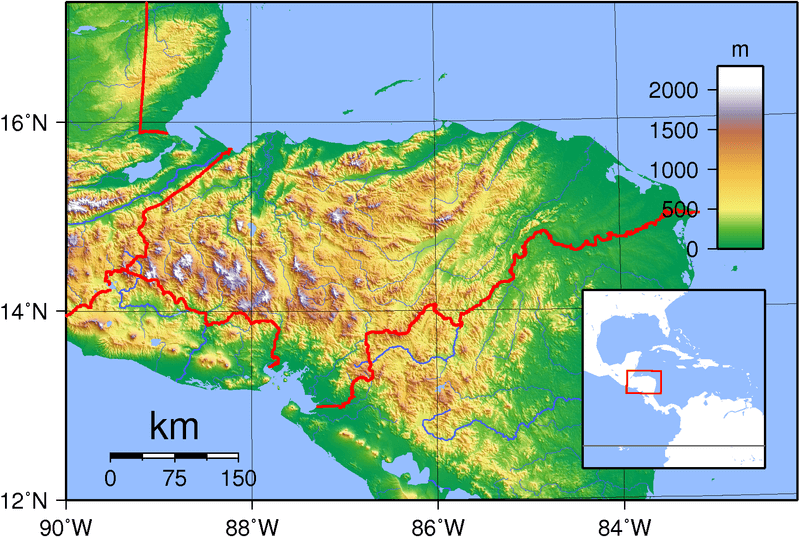
Topographic map of Honduras
Geographic Regions
Honduras exhibits geographical diversity that can be categorized into four distinctive regions, each contributing to the nation's varied landscape:
-
Eastern Caribbean Lowlands
-
Northern Coastal Plains and Mountains
-
Central Highlands
-
Pacific Lowlands
Eastern Caribbean Lowlands
Nestled along the enchanting Caribbean coast of Honduras, the Eastern Caribbean Lowlands unveil a captivating landscape characterized by lush, swampy terrain and a tropical ambiance. This region serves as a sanctuary for diverse wildlife, where jaguars, monkeys, and crocodiles thrive amidst the verdant surroundings.
The eastern Caribbean lowlands cover roughly 20% of the country's land area, including both the lowlands and the nearby mountain slopes. This region is significant and culturally and ecologically rich, with the northern part of the Mosquito (Miskito) Coast falling under its purview.
The climate here is hot and humid, fostering dense forests in the interior highlands. While the lumber industry is vital in the economic landscape, the scattered population predominantly relies on subsistence agriculture and fishing for sustenance. This harmonious coexistence of industry and traditional practices underscores the unique blend of natural beauty and human resilience that defines the Eastern Caribbean Lowlands of Honduras.
Northern Coastal Plains and Mountains
Situated in the northeastern corner of Honduras, the northern coastal plains and mountains unfold as a landscape marked by undulating hills and expansive coastal plains. This region, covering approximately an eighth of the country's land area, emerges as a pivotal hub of critical natural resources, with timber and gold among its notable assets.
Despite its modest land area, the northern coastal plains and mountains accommodate around a quarter of the country's population, highlighting its significance as a densely inhabited and economically active area.
Agriculture thrives in this region due to rich, loamy soil conducive to crop cultivation. The diverse crops include rice, cassava, palm oil, maize, bananas, citrus fruits, and beans. Additionally, cattle-raising is a prevalent economic activity, contributing to the region's agricultural vibrancy.
Economically vital, the coastal region hosts crucial ports for import and export and well-established railroad lines connecting to the interior. Puerto Cortes, positioned on the northern Caribbean coast, is the largest seaport in Central America, enhancing the region's strategic importance in domestic and international trade.
Central Highlands
Spanning Honduras's western and central expanses, this region unfolds as a captivating collage of mountainous terrain, earning distinction as the central highlands. Here, a mosaic of diverse ecosystems, ranging from rainforests and cloud forests to pine forests, paints a rich portrait of Honduras' natural beauty.
The Sierra Madre de Chiapas, a majestic mountain range stretching east and west, dominates this region, commanding two-thirds of the country's territory. Amidst these central highlands lies the heart of the nation's population, where rugged mountains characterize the landscape. Notably, the western part of this region houses Cerro Las Minas, the highest peak in Honduras, adding a lofty pinnacle to the dramatic mountainous scenery.
Flat valleys ranging from 600 - 1,200 meters (2,000 - 4,000 feet) intersect the undulating terrain. Fertile soils, derived from volcanic activity, form the foundation for diverse agricultural endeavors. Here, the cultivation of coffee, tobacco, wheat, corn, sorghum, beans, fruits, and vegetables thrives alongside livestock-raising practices encompassing cattle, poultry, and hogs. This region is an agricultural stronghold, blending picturesque landscapes with a productive assortment of crops and livestock.
Pacific Lowlands
Nestled along the picturesque Pacific coast of Honduras, the Pacific Lowlands unfold as a vast expanse of flat, fertile land. This region, distinguished by its topographical charm, is a crucial agricultural hub, nurturing significant crops such as coffee, bananas, and sugarcane.
Stretching alongside the Gulf of Fonseca and the lower slopes of the surrounding mountains, the Pacific Lowlands, while covering a relatively small portion of Honduras' land area, play an essential role in the nation's agricultural production. Despite their modest size, they contribute to sustaining a proportionate population segment.
The rich, fertile soils of the lowlands foster a diverse range of crops, including sesame seed, cotton, corn, and sorghum. This fertile canvas also supports cattle raising in expansive pastures, while the nearby uplands are adorned with thriving coffee plantations. The Pacific Lowlands' unique blend of flat landscapes and bountiful harvests exemplify the agricultural richness that defines this region along Honduras' Pacific coast.
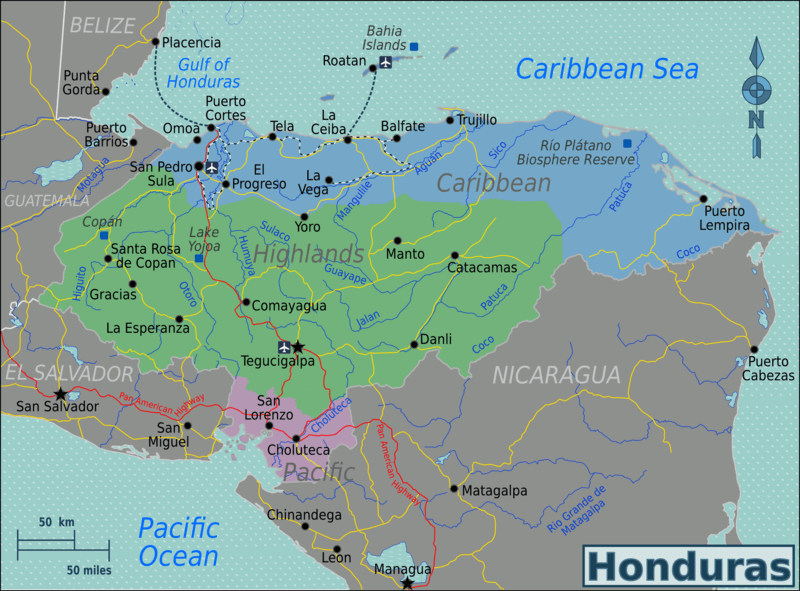
Map depicting the geographic regions of Honduras
Islands and Archipelagos
Honduras has a diverse coastal geography, including several notable islands and archipelagos in the Bay of Honduras and the Caribbean Sea. The country's islands and archipelagos offer unique landscapes, cultural experiences, and natural wonders for visitors to explore.
See more: Islands and Archipelagos of Honduras
Bodies of Water
Honduras boasts diverse bodies of water that significantly contribute to the country's natural beauty, biodiversity, and economy. The country is bordered by the Caribbean Sea along its northern coastline, with several notable features. The Gulf of Honduras, a vast body of water shared by Honduras, Belize, Guatemala, and a portion of Mexico, acts as a vital transportation route for shipping and trade. The country is also graced with picturesque bays and lagoons, such as Trujillo Bay and Laguna de Alvarado, offering serene coastal landscapes and supporting various marine life.
See more: Water Bodies of Honduras
Administrative Divisions
Honduras is administratively divided into 18 departments and 298 municipalities. Each department is headed by a governor appointed by the President of Honduras.
See more: Cultural Landscape of Honduras
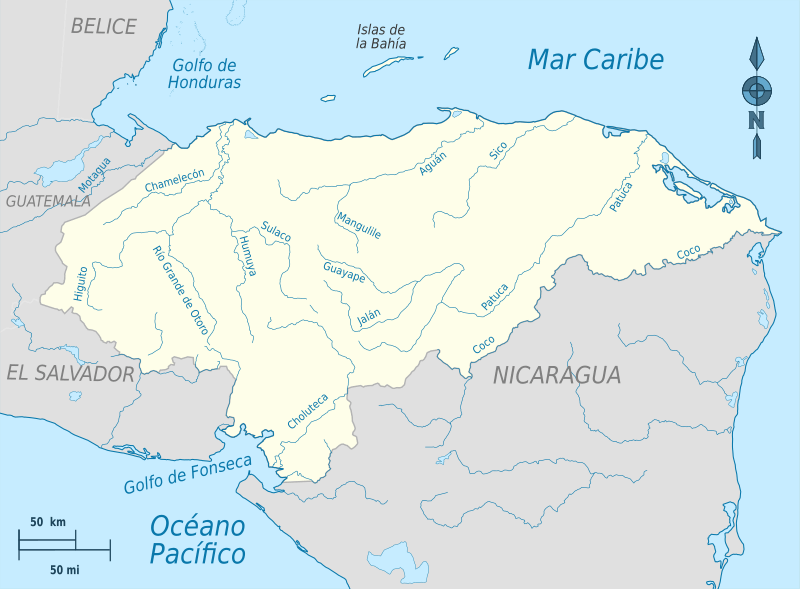
Hydrographic map of Honduras
Natural Regions
The natural landscape of Honduras includes rainforests, cloud forests, and mangroves, as well as savannas and mountain ranges with pine and oak trees. In addition, its Caribbean coast in the north hosts a portion of the Mesoamerican Barrier Reef System.
Ecological Regions
The following is a list of terrestrial ecoregions in Guatemala, as defined by the World Wide Fund for Nature (WWF). Guatemala is in the Neotropical realm. Ecoregions are classified by biome type - the major global plant communities determined by rainfall and climate.
Tropical and subtropical moist broadleaf forests
Tropical and subtropical dry broadleaf forests
Tropical and subtropical coniferous forests
-
Miskito pine forests
Mangroves
-
Gulf of Fonseca mangroves
-
Northern Honduras mangroves
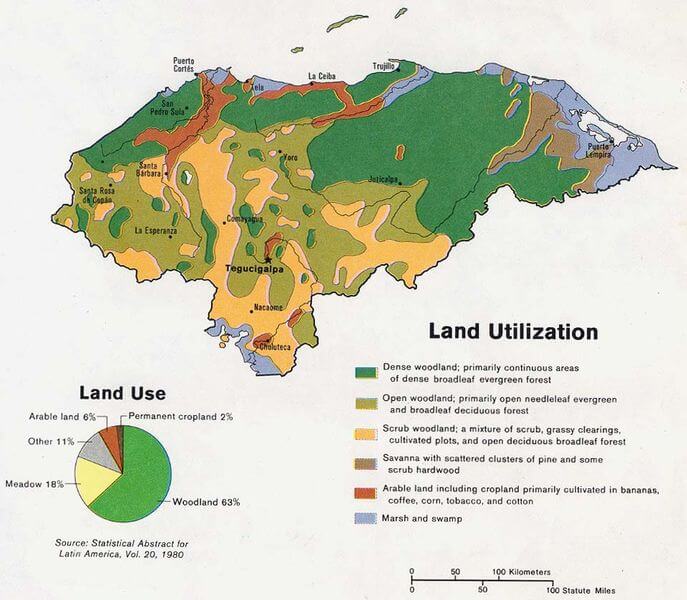
Land use map of Honduras
